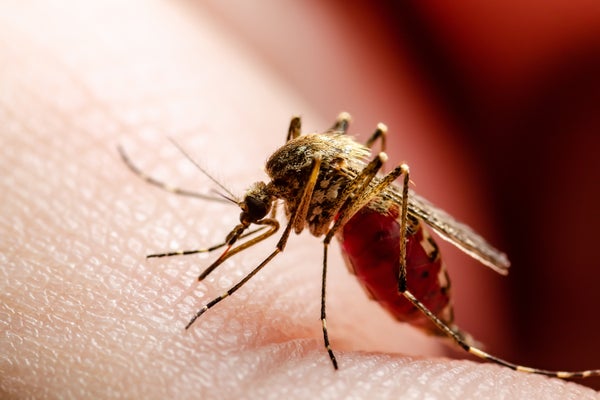As someone with mild ADHD, I find it hard to focus if there are any distractions around me. As soon as something catches my attention, even for a moment, I’m hooked. Between this sentence and the last, I spent a minute or two staring out the window at a deer walking through my yard.
It’s a trait that notoriously makes it hard to sit in long classes and perform mundane tasks. And, it’s a trait that many of us try to unlearn or suppress through medication, cognitive behavioral therapy, mindfulness or other means.
But, why did humans evolve ADHD in the first place? If distractibility is such a disadvantage, wouldn’t natural selection have weeded us out long ago?
One theory posits that ADHD might have been a helpful adaptation to the lifestyles of prehistoric humans. An adaptation that is, unfortunately, maladapted to modern life.
How the Neolithic Revolution Shaped Human Evolution
For tens of thousands of years, humans were nomads. They traveled from place to place in search of sustenance and lived in small tribes bound together by blood relations.
But, sometime around 12,000 years ago, Homo sapiens in the Middle East learned to grow crops and domesticate animals. The neolithic revolution, or agricultural revolution as Yuvaal Harari called it in his hit book Sapiens, was a paradigm shift that would forever change the course of human society.
Agriculture allowed humans to live in one place for a lifetime. It motivated us to live in bigger and bigger villages, towns, and cities, where every person played a unique role in a larger system. While once our days were filled with exploration and ever-changing means of survival, now we were consumed by the need to hone and perform a single job.
Read More: What Was the Neolithic Revolution, and How Did It Change Human Societies?
Human Evolution and Hunter-Gatherer Societies
The oldest fossils of prehistoric Homo sapiens date back to around 300,000 years ago. That means that we lived and evolved as hunter-gatherers for at least 288,000 years before the Neolithic Revolution.
“95 percent of our evolutionary history was spent living as hunter-gatherers,” Annie Swanepoel, a child and adolescent clinical psychiatrist, told Discover. “That means there’s an evolutionary mismatch.”
The evolutionary theory posits that people with ADHD served an essential role in ancient hunter-gatherer tribes. Their impulsivity and thrill-seeking may have helped them hunt down prey, and their distractibility and adventurousness may have led them to spot more edible plants as they wandered.
It’s an attractive theory. One that casts ADHD as a vestigial remnant of our ancestral past rather than a simple disorder. If it’s true, it could change the way we treat ADHD or even how we integrate people with ADHD into our society. And, earlier this year, new evidence came to light in support of it.
Read More: Why Did Our Nomadic Ancestors Settle Down? They Wanted To Own Stuff
Testing the Strengths of ADHD in Foraging Tasks
The COVID-19 pandemic stymied many experiments with human participants. All of a sudden, face-to-face interactions posed a deadly risk — one that researchers could not ethically ask subjects to take on. But for David Barack and his collaborators, it sparked an idea: an experiment that people could take part in from behind a computer screen. All they had to do was click the link and follow the prompts.
The directions were simple. The first thing that each of the 457 subjects read was this:
In this experiment, your goal is to collect as many berries as you can in the amount of time you are given.
By moving their cursor around a crudely animated scene, subjects traveled between bushes and collected berries from them. At any point they chose, they left a given bush to travel to a new one. Each bush yielded fewer and fewer berries the longer a subject stayed, something that the researchers made clear in their directions.
As you keep picking from the same bush repeatedly, the number of berries you pick at each attempt will go down
Yet, traveling between bushes took time. This paradox presented subjects with a puzzle to solve: how much time should they spend at each bush in order to maximize their harvests?
The berry-picking game was designed to closely mimic a real-life foraging scenario. The ideal solution to the game would also work on actual berry bushes in nature.
“The reason we chose that paradigm is it mimics an enormous range of decision contexts,” Barack explained. “In particular, ones that were present in our selective environment.”
Read More: Women Hunters Were Extremely Common in Ancient and Modern-Day Foraging Societies
The Surprising Results of Foraging Performance
After the game was over, each participant filled out a volley of questions that asked them to self-report symptoms of ADHD. Barack and his co-authors were curious: would subjects who exhibited traits associated with ADHD perform better or worse?
Barack expected the ADHD-prone subjects to move between bushes too quickly and thus gather fewer berries. But, as it turned out, all of the subjects, no matter their status, overstayed at each bush. The subjects who self-reported ADHD symptoms actually did better than their counterparts. They moved from bush to bush slightly sooner, maximizing their yields.
“In certain contexts, there’s advantages to having these kinds of traits,” Barack said of his results. “It seems like one of those contexts is a foraging one.”
Read More: What We Know About the Causes and Symptoms of ADHD
Adapting Ancient Strengths to Modern Decision-Making
So, humans with ADHD may have served an essential role in prehistoric times. Perhaps they were the champion foragers within each hunter-gatherer tribe. But what use is that information to someone struggling to adapt to modern life?
According to Barack, understanding what types of decisions people with ADHD excel at, might actually help us engineer our surroundings to match our aptitudes. For instance, people with ADHD actually make quite good decisions, provided they are simple decisions — like deciding whether to stay or go from a berry bush. So, why not make life a little simpler?
“The classic example here is when you’re at the grocery store and there’s just overwhelming amounts of choices,” he explained. “The alternative environment would be getting single offers at a time… Do you want this? Do you not want this?”
Barack says that people with ADHD should design their surroundings to make simple decisions. For instance, if I stock my shelf with a cornucopia of junk food, it won’t be easy to eat healthily. So, I should keep a limited pantry full of healthy food. Then, all I have to do is choose when to eat.
Of course, the reality of modern life, at least in the first world, is not one of simple choices. So, simplification is no silver bullet.
Read More: In a World of Endless Choices, Why Is Decision-Making So Tiring?
An Evolutionary Perspective on ADHD
But Swanepoel, who works with children with ADHD in her psychiatry practice, still finds an evolutionary perspective useful. It doesn’t provide any concrete answers, but it provides a framework for a non-pharmaceutical approach.
“You realize it’s not a pathology in the child as much as it’s the mismatch between the child and what their environment is like,” she explained. “I wouldn’t want people to be anti-medication because it can really help. However, presently, we’re concentrating only on medication, which isn’t right.”
Swanepoel shared an anecdote. A teenager came to her practice with severe ADHD. She prescribed him medication, which allowed him to manage schoolwork better. After a few years, he told her that he had stopped taking his pills. Yet, he was still turning in work on time and getting good grades. The only thing that had changed was that he was playing on a college soccer team. Every study session was sandwiched between bouts of intense exercise.
“You have two options,” Swanepoel said. “One is to change the child, through medication, for example. The other is to change the environment.”
Read More: Is ADHD Really on the Rise?
Article Sources
Our writers at Discovermagazine.com use peer-reviewed studies and high-quality sources for our articles, and our editors review for scientific accuracy and editorial standards. Review the sources used below for this article:
Gabe Allen is a Colorado-based freelance journalist focused on science and the environment. He is a 2023 reporting fellow with the Pulitzer Center and a current master’s student at the University of Colorado Center for Environmental Journalism. His byline has appeared in Discover Magazine, Astronomy Magazine, Planet Forward, The Colorado Sun, Wyofile and the Jackson Hole News&Guide. Find him on X, Instagram, or LinkedIn.














